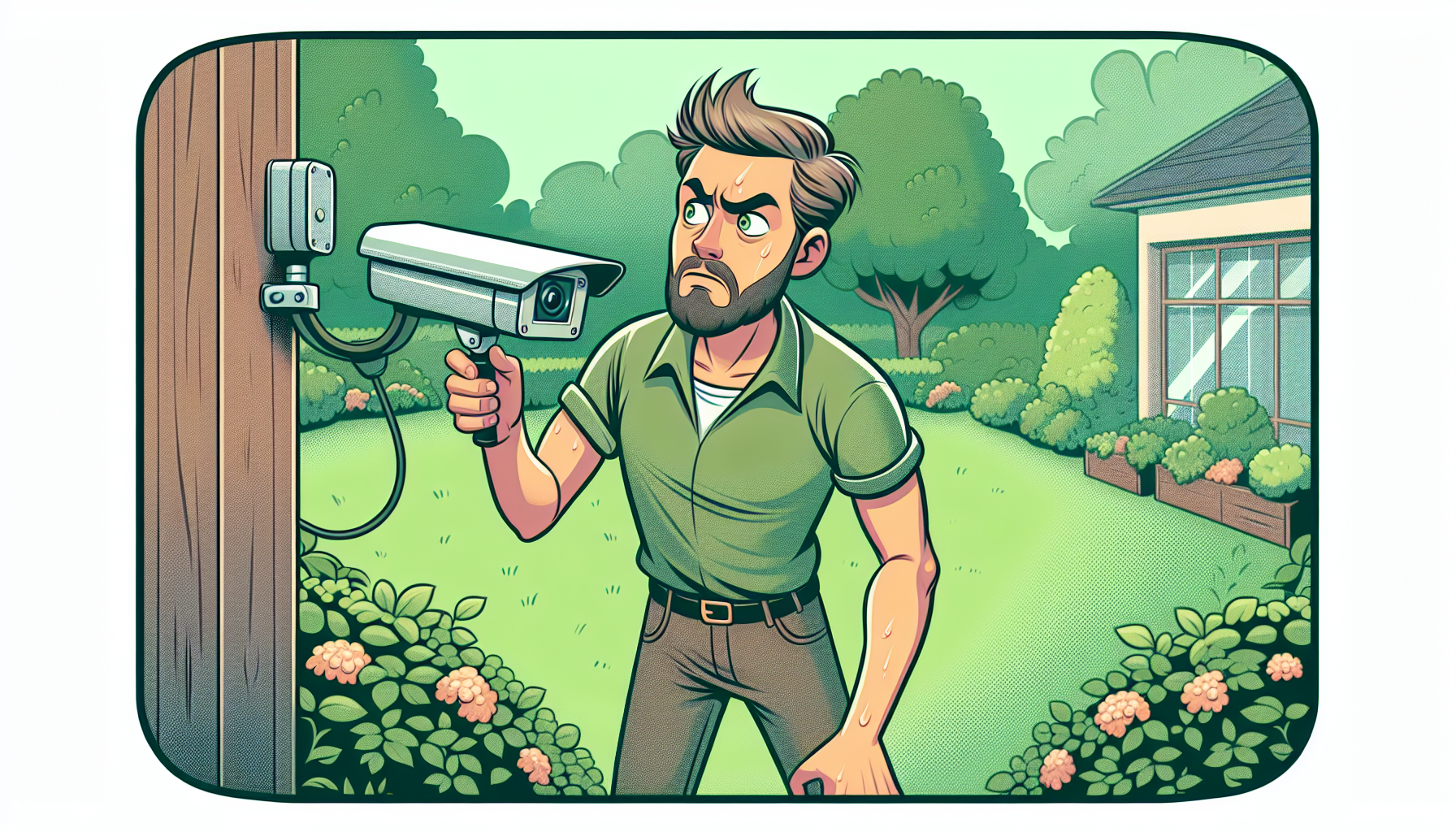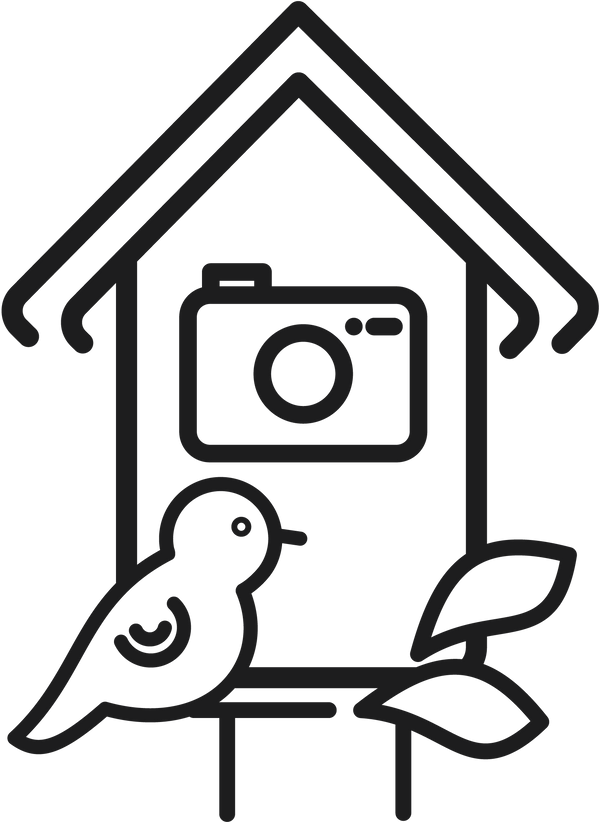
Camera surveillance in the garden: What is allowed for birdwatching?
More and more garden owners in Germany want to observe the birdlife on their doorstep - live and up close. Cameras in the garden or on the balcony provide impressive insights into the behavior of blackbirds, titmice and the like. But an important question quickly arises: What is allowed when monitoring cameras in the garden? Between data protection, neighbors' rights and nature conservation, there are clear rules. If you know them, you can enjoy birdwatching without any legal concerns.
What is allowed with camera surveillance in your own garden?

In Germany, surveillance with cameras in the garden is subject to strict regulations. It is crucial that only your own property is filmed - and that no public paths or neighboring areas appear in the image.
Relevant laws for the private sector are the General Data Protection Regulation (GDPR) and the Federal Data Protection Act (BDSG). As soon as people are recognizably recorded - e.g. neighbors, visitors or walkers - these provisions apply.
Filming private areas - not the surroundings
Camera images may only show your private area. This includes your flower beds, lawns, a bird feeder or the nesting box in your own garden.
It is not permitted to position the camera in such a way that adjacent properties or the sidewalk are also filmed. Reflections from windows or glass surfaces can also be problematic.
Sound recording? Only with express consent
Many modern garden cameras have microphones. Caution: Sound recording is particularly sensitive under data protection law and is almost always prohibited in private areas. It should be deactivated in the settings.
How do you install a garden camera in a legally compliant manner?
There are a few simple basic rules to ensure that camera surveillance in the garden does not become a data protection trap. Alignment, technical functions and a warning sign are particularly important.
Choice of location: Aim only at your own garden
Align your camera so that it only captures the area in which the birdwatching is to take place. The following locations are ideal:
- Cameras inside nesting boxes or feeders
- Cameras installed close to the ground at bird baths
- Cameras behind bushes or garden fences as a visual barrier
Avoid wide-angle lenses or panoramic shots. Many models allow you to hide image areas (masking function).
Transparent indication of video surveillance
As soon as third parties could theoretically have access to the filmed area - for example if the front garden is open - a sign with the following content should be clearly visible:
- Notice of camera surveillance
- Purpose such as "Bird watching in private garden"
- Name and contact details of the person responsible (e.g. property owner)
A template could read as follows: "This area is monitored with a camera for the purpose of bird watching. Responsible: Erika Vogler, Gartenweg 12, 12345 Musterstadt."
Which animal protection laws apply to bird-watching cameras?
Birdwatchers must also observe animal welfare regulations - especially during the breeding season. In Germany, the Federal Nature Conservation Act (BNatSchG) provides comprehensive protection for native wild birds.
Only undisturbed observation permitted
Cameras must not cause any disturbance at the breeding site. The camera must be installed in such a way that it does not shine too brightly, does not emit heat and does not require access to the nesting site during the breeding season.
The following tips will help you to use your camera in an animal-friendly manner:
- Install cameras before the start of the breeding season (March)
- Only use models with weak infrared light
- Protect nest boxes from heat and direct sunlight
According to Section 44 BNatSchG, wild birds may not be disturbed or influenced in their development during breeding and rearing. Camera surveillance is only permitted if it does not contradict these principles.
You can obtain more information from NABU Germany.
Which camera technology is suitable for observing birds?
There are now specialized models for birdwatching in the garden. Durability, resolution and power supply play a decisive role.
Suitable device categories
- Nest box cameras: Small, wired cameras with night vision for use in closed birdhouses or starling boxes
- Outdoor video cameras: WLAN-capable, weatherproof devices with HD resolution for feeding stations or bird baths
A weatherproof housing (at least IP65) is important, as is an optional storage option on an SD card. This means that the video remains local and does not have to be uploaded to the cloud - a plus for data protection and security.
Power and data connections in the garden
There are several solutions for operating the camera:
- Power supply: Power bank, solar panel with battery or weatherproof power cable
- WLAN coverage: Repeater in the garden shed, outdoor antenna or camera with LTE module
If no Wi-Fi is available, choose a stand-alone camera with local storage. Models without an app connection also reduce potential data protection risks.
What mistakes should you avoid with garden cameras?
If you want to observe birds in your own garden, you can avoid legal problems with little effort. Nevertheless, the following mistakes are common - and can be easily avoided.
Unlawful camera orientation
- Taking pictures of roads, sidewalks or neighboring properties
- Unintentional sound recording by microphones
- No information about camera use despite public visibility
Proceed carefully when setting up the camera and regularly check the field of view of your camera.
Technical and design pitfalls
If you want to share your recordings - for example on YouTube or a family website - you should ensure that data protection is observed:
- Remove street names, faces or windows in the background
- Use short video clips with explanatory texts
- Show bird names and behavior in an understandable way
This not only makes your recordings safe - but also informative and entertaining.
A helpful source for bird-friendly garden design is offered by gardenjournal.net.
Conclusion: Watching birds with a camera - legally compliant and nature-friendly
With a camera, you can gain fascinating insights into the wildlife in your garden. To do this legally and without disturbance, a little planning is required - but it's all the more fun.
Install your camera in a way that is suitable for animals and geared towards your private area. Do without sound, use information boards if necessary and respect the breeding behavior of native species.
In this way, modern technology becomes a window into a silent and moving world full of life. Get started now - and experience the birds in your garden up close!
FAQ: Camera surveillance for bird watching in the garden
Is camera surveillance permitted in private gardens?
Yes, as long as only your own property is filmed and no public or neighboring areas are affected.
Can my camera record sound?
No, sound recordings are only permitted in private areas with the express consent of all parties concerned - otherwise they are prohibited.
May I publish videos of the birds online?
In principle, yes, as long as no personal data can be seen or heard. Remove license plates, faces and house facades.
Do I have to display my camera sign in public?
Only if the monitored area can potentially be accessed by third parties - e.g. front gardens or open properties.
Which camera is suitable for a nesting box?
Small indoor cameras with infrared function, low operating noise and SD card storage are ideal. Important: Install before the breeding season.
